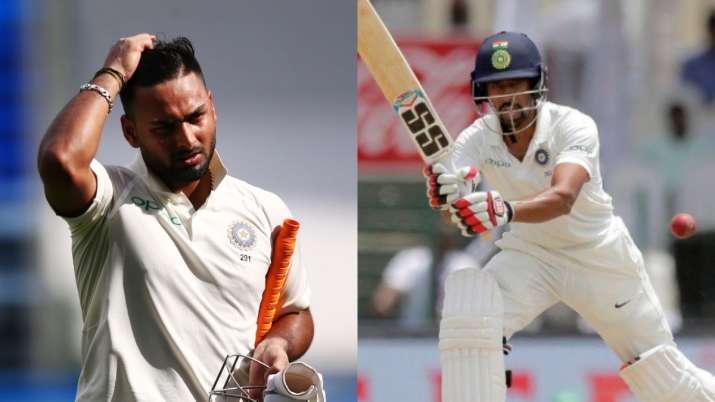On the 27th of November 2020 and on the 29th of November 2020, a couple of limited over games were played in two different time zones. One was a T20 and the other was a ODI. A day after, a couple of beautiful pieces were published in the most wonderful cricket website, www.espncricinfo.com. One was written by the incredible columnist Firdose Moonda and the other by Siddarth Monga. India lost the ODI against Australia and South Africa lost the T20 against England. Ironically, both of them lamented the absence of a 6th bowler for South Africa & India respectively. Australia scored 374 in the ODI whereas South Africa scored only 147 in T20. Would a 6th bowler turned the game around for either of the team? Does teams really need a sixth bowler?
Let me first concentrate on Monga’s piece
Monga writes “With at least five men inside the ring for 40 overs in ODIs, it gets really difficult to get away with just five bowlers on true flat pitches. You can’t afford for even one of them to have an off day, and it was obvious as soon as Navdeep Saini was introduced that Australia were looking to take down at least two of the three bowlers who follow the opening act.”
“Not only does it put the lesser bowlers under extra pressure, batsmen can eliminate risks against your wicket-taking bowlers.”
Interpretation of Monga’s claim
The Indian team for the first ODI was packed with 6 batsmen and 5 bowlers. This is an ideal combination for any ODI. There were days in the past when the Indian team will be filled with 7 batsmen and 4 bowlers and will actually struggle to get 10 overs out of the 7 batsmen. These bowlers will invariably be taken for runs. It is true that the ODI rules have changed over the years. Short boundaries and flat pitches are not of much help either for the bowlers. Invariably, the bowlers will go for runs. About 15 years ago, a score of 250 was competitive and not that many bowlers went above 50 runs in their allotted overs. Now, because of so many rules that favours the batsmen, scores in excess of 300 or infact 350 has become common place.
With the advent of T20, teams are much more confident of chasing 350 rather effortlessly. As such, now the average runs given away by a bowler is more than 50. 10 overs for 50 runs with 1 or 2 wickets is considered quite economical. Hence, teams will always know that one or two bowlers is bound to have an off day and as such give away lot of runs. Now, if all the bowlers bowled poorly, a sixth bowler will not have made any difference. Infact, I would go on to state that a sixth bowler would have been as expensive as the other bowlers. Instead of wishing for a sixth bowler, Monga should have written about how inept the bowlers were. This despite the fact that most of the bowlers bowled close to 50 overs in the recent IPL.
Monga continues
Monga also writes “The abundance of one-dimensional players has forced India to split their ultra-successful double-wristspin combination of Chahal and Kuldeep Yadav.”
It is true that Kuldeep & Chahal were a successful combination. They had one really bad game in England and from then on, that pair was split. This was wrong on the part of the team management. With Rahul keeping wickets, there is no reason not to unite those two. Three fast bowlers and a couple of spinners will be ideal. If five bowlers are incapable of restricting the opposition within a reasonable score or defend a reasonable score, the sixth bowler will not be able to.
Monga further writes “In terms of squad selection, India have tried their best to fill the breach. They have tried Vijay Shankar, Shivam Dube and Krunal Pandya, but none of them can claim to seal a spot based on one of the two suits.”
Of the trio, none is a good batsman who can bowl or good bowler who can bat.
Who is an ideal 6th bowler?
An ideal 6th bowler must be one who must be pretty good with the bat. If not the likes of Kallis, atleast upto the calibre of Hardik Pandya who was restricted from bowling because of a back problem. Pandya is very good with the bat and capable with the ball. You just cannot have your sixth bowling option like Kedhar or Afridi or even Mitchell Marsh.
Firdose Moonga writes about the six bowler theory
“De Kock is hamstrung by what is available to him. South Africa have gone into both matches with only five frontline bowlers which (and apologies for bringing him up again) du Plessis has repeatedly said is not enough. A team only needs one of those bowlers to have one bad over and the game could be lost. This series is a case study in that.”
South African batsmen scored 147 and that too in a T20. This is 20 runs under par in any T20 game. It is not like there were still another 2-3 overs to go. South Africa lost that game in the last over. This was with five bowlers. These bowlers have done a good job. If only the batsmen had scored another 20 runs, South Africa would have won with five bowlers. Again, a sixth bowler would not have made any difference. All he would have done is, he would have given another bowler some rest and nothing more than that.
Conclusion
It is time to stop harping on six bowlers and ensure that the five bowlers selected does the job. Instead, teams like India and South Africa must concentrate on how to improve the batting abilities of the bowlers which will give the batsmen much needed comfort to play aggressive brand of cricket. Unless, the sixth bowler is of the calibre of a Jacques Kallis or Ben Stokes or Hardik Pandya.
Other interesting topics can be read here and here.



